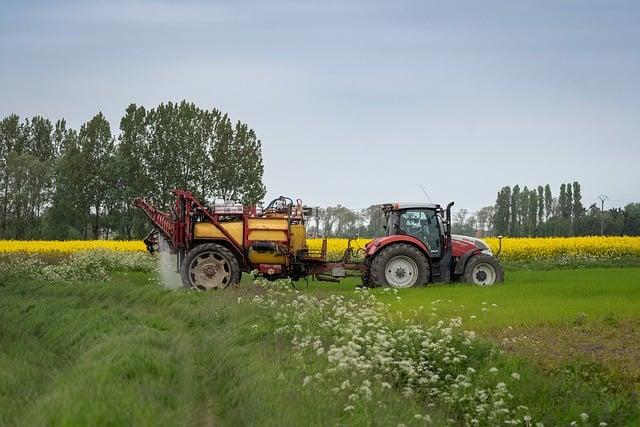Farming is regularly heralded as a pivotal development in human historical past, ushering in an technology of settled societies and agricultural abundance.Even though, the transition from hunter-gatherer life to agricultural practices has been anything else however seamless, particularly in North Africa. On this article, we delve into the complexities and demanding situations that accompanied the creation of farming on this area, exploring the environmental, social, and financial elements that formed its preliminary reception. Via analyzing archaeological findings and previous data, we goal to make clear the nuanced courting between early farmers and their landscapes, revealing a tale of adaptation, combat, and resilience. A ways from being a wholesale luck, the appearance of agriculture in North Africa items an enchanting case find out about of ways innovation can collide with fact, reshaping human societies in sudden techniques.
The Demanding situations of Agriculture in Historic north Africa
The creation of agriculture in historical North Africa encountered a lot of hindrances that hindered its early luck. The area’s various climates posed a significant problem, starting from arid deserts to fertile spaces close to rivers. This variability made it tricky for standard farming strategies, at the beginning designed for constant environments, to be successfully applied. The native populations have been regularly reliant on foraging and herding, with many communities no longer but supplied to transition to a sedentary agricultural way of life. Moreover, the soil high quality numerous considerably, requiring consistent adaptation and innovation to domesticate plants effectively.
Moreover, socio-political elements performed a the most important function in figuring out the viability of agricultural practices. Many communities confronted land possession disputes, which difficult the established order of solid farms. Rich elites steadily sufficient monopolized land sources, leaving little prospect for smaller farmers to thrive. The loss of complicated agricultural tactics, reminiscent of irrigation methods, additional exacerbated meals safety and agricultural productiveness. the next desk summarizes probably the most number one demanding situations confronted by means of historical North African farmers:
| problem | Description |
|---|---|
| Local weather variability | Various climate stipulations made constant farming tricky. |
| Soil high quality | Inconsistent fertility ranges required adaptation and innovation. |
| Land disputes | Rich elites regularly limited get admission to to agricultural land. |
| Loss of era | Restricted farming tactics hindered productiveness and enlargement. |

Cultural and Environmental Elements Impacting Early Farming
The intersection of tradition and atmosphere performed a the most important function in shaping the trajectory of early farming in North Africa. Indigenous practices and ideology considerably influenced how communities tailored to agricultural tactics. As an example, seasonal rituals tied to environmental adjustments regularly dictated planting and harvesting instances. Many communities depended on oral traditions to move down wisdom about appropriate plants and the most efficient farming strategies,which have been deeply embedded in native cultures. Moreover, the cultivation of explicit plants used to be regularly guided by means of social norms and non secular ideals, making sure that farming used to be no longer just a manner of sustenance but in addition a very important part of group id.
Environmental demanding situations additional difficult the adoption of farming practices. Soil high quality, local weather variability, and water availability immediately influenced agricultural productiveness, dictating which plants might be feasibly grown. Areas with fertile land skilled extra luck, while spaces plagued by means of harsh stipulations or restricted sources noticed early farming efforts falter. Communities needed to include inventions reminiscent of irrigation tactics or adapt their crop possible choices to climatic realities. The next desk highlights the environmental elements affecting early farming throughout other North African areas:
| area | Soil High quality | Local weather | Water Resources | Vegetation Grown |
|---|---|---|---|---|
| North Coast | Fertile | Mediterranean | Rivers, rainfall | Grains, olives |
| Sahara | Deficient | Wasteland | Restricted | Cacti, drought-resistant |
| Atlas Mountains | Reasonable | alpine | Snowmelt | Barley, culmination |

Classes from Early Agricultural Practices in North Africa
Early agricultural practices in North Africa divulge a fancy tapestry of experimentation and adaptation. As communities shifted from a nomadic way of life to settled farming, they confronted vital demanding situations that compelled them to innovate. The area’s various local weather, starting from arid deserts to fertile river valleys, necessitated more than a few methods for cultivating plants and domesticating animals. Some key insights come with:
- Crop Diversification: Farmers discovered early at the significance of planting a couple of crop types to mitigate the dangers of crop failure because of pests or adverse weather conditions.
- Soil Control: Ways reminiscent of crop rotation and soil enrichment the usage of natural subject have been the most important for keeping up fertility in a area with regularly poor soil quality.
- Water Conservation: early agriculturalists advanced refined irrigation methods to maximise water utilization, the most important for survival in arid stretches.
Apparently, the transition to agriculture used to be no longer uniformly certain. A number of elements contributed to hardship and setbacks, together with environmental constraints and social dynamics. An research of those demanding situations uncovers treasured classes for contemporary agricultural practices. Amongst them:
| Problem | Lesson Discovered |
|---|---|
| local weather Variability | Significance of adaptable farming tactics |
| Useful resource Shortage | Price of group cooperation and sharing sources |
| Pest Infestations | Want for built-in pest control methods |

Sustainable Farming: Finding out from Ancient Setbacks
The creation of farming to North Africa marked an important turning level in human historical past,but it used to be no longer with out its difficulties. Early agricultural practices confronted a lot of demanding situations, which ended in profound classes in regards to the sustainability of farming in various climates. Many early farmers have been unprepared for environmental variability and lacked working out of the area’s ecosystems. In consequence, they encountered problems reminiscent of:
- Soil Degradation: Overcultivation ended in nutrient depletion.
- Water Control: Inefficient irrigation practices exacerbated drought stipulations.
- Crop Variety: Reliance on a restricted collection of plants made farming at risk of pests and sicknesses.
Those ancient setbacks highlighted the essential want for adaptive methods in agriculture. Farmers started to be informed from their disasters by means of emphasizing a extra holistic way to farming that incorporated:
- Crop Rotation: this custom helped deal with soil well being and fortify yield.
- Agroforestry: Integrating bushes into farming methods equipped colour and progressed biodiversity.
- Neighborhood Wisdom Sharing: Collective finding out and collaboration fostered resilience in opposition to environmental demanding situations.
For instance those ideas, the next desk summarizes key classes discovered from early farming practices in North Africa:
| Setback | Lesson | Easiest Observe |
|---|---|---|
| Soil Degradation | Significance of soil well being | Imposing composting and canopy plants |
| Water Shortage | Want for environment friendly irrigation | drip irrigation and rainwater harvesting |
| Restricted Crop Types | Advantages of biodiversity | rising a number of plants |

Suggestions for Trendy Agriculture Impressed by means of Historic Ways
As trendy agriculture grapples with demanding situations reminiscent of local weather exchange and useful resource depletion, revisiting historical farming tactics may yield cutting edge answers. For example, practices like intercropping, the place other plants are cultivated in combination, support biodiversity and fortify soil well being. Moreover, dry farming, prevalent in areas like historical Egypt, optimizes water use by means of depending on moisture conservation tactics that may be essential in arid climates nowadays. Such strategies no longer most effective scale back the dependence on chemical fertilizers and insecticides but in addition advertise sustainability, making sure that agricultural practices appreciate the ecological steadiness.
Imposing crop rotation—a time-tested technique that minimizes soil depletion and pest outbreaks—can considerably give a contribution to trendy agricultural potency. Moreover, historical irrigation strategies, reminiscent of qanats or underground channels, can be offering insights into water control crucial for resilient farming methods. Via combining those ancient tactics with state-of-the-art era, farmers can create a holistic way to agriculture that respects conventional knowledge whilst addressing the urgent calls for of recent meals manufacturing.

Revitalizing Agricultural Methods for Resilient Long term Harvests
The coming of agriculture in North Africa marked a transformative but difficult bankruptcy within the area’s historical past. Early farming practices confronted a lot of hindrances, from harsh climatic stipulations to restricted wisdom of sustainable tactics. Many communities struggled with soil fertility and water shortage, which hindered their skill to domesticate plants successfully. because of this, the preliminary makes an attempt at farming have been regularly met with prime failure charges, resulting in a reliance on conventional nomadic life. The teachings discovered from those early setbacks lead the way for cutting edge answers which are crucial for nowadays’s agricultural resilience.
In fresh practices, revitalizing agricultural methods comes to embracing a multi-pronged way to support sustainability and flexibility. Key elements of contemporary farming in North Africa should come with:
- Crop Diversification: Introducing a number of plants to cut back dependency on unmarried money plants and fortify ecological steadiness.
- Water Control: Imposing environment friendly irrigation methods and rainwater harvesting to fight the demanding situations posed by means of local weather exchange.
- Soil Rehabilitation: Adopting conservation tillage and natural farming how one can repair soil well being and nutrient ranges.
- Neighborhood Engagement: Involving native farmers in decision-making processes to be sure that answers are adapted to precise demanding situations.
Inventions reminiscent of precision agriculture and agroecological practices are reshaping the panorama, providing gear that empower farmers to make knowledgeable choices. Key metrics for assessing those methods come with:
| technique | Affect | Implementation Problem |
|---|---|---|
| Precision Agriculture | Advanced yield thru information analytics. | Get right of entry to to era and coaching. |
| Agroecological Practices | Enhanced biodiversity. | Resistance to modify from conventional strategies. |
| Water Conservation | Environment friendly useful resource utilization. | Funding in infrastructure. |
Remaining remarks
the creation of farming in North Africa marked a pivotal second within the area’s historical past, but it surely used to be no longer an unqualified luck.The transition from hunter-gatherer societies to agricultural practices caused a myriad of demanding situations, together with climatic fluctuations, ecological constraints, and social disruptions. Whilst agriculture in the long run laid the groundwork for the upward thrust of complicated societies, the preliminary struggles confronted by means of early farmers spotlight the resilience and flexibility of human communities. As we proceed to discover the intricate tapestry of North africa’s agricultural previous, it is very important to acknowledge the multifaceted nature of this transition and its lasting affect on cultural and environmental dynamics.Working out those ancient complexities no longer most effective enriches our wisdom of historical civilizations but in addition informs fresh agricultural practices and their sustainability nowadays.
Source link : https://afric.news/2025/03/24/farming-wasnt-a-wholesale-success-when-it-arrived-in-north-africa-science/
Creator : Samuel Brown
Post date : 2025-03-24 12:13:00
Copyright for syndicated content material belongs to the connected Source.



